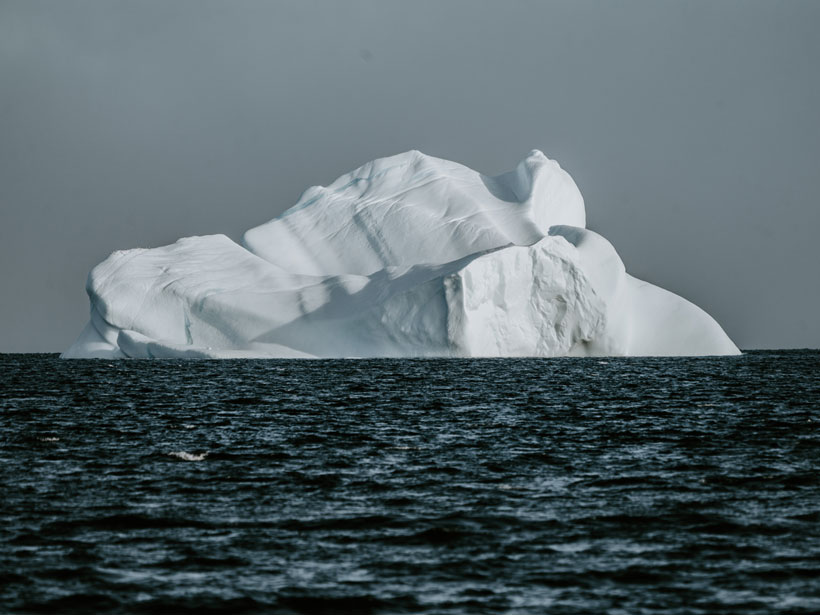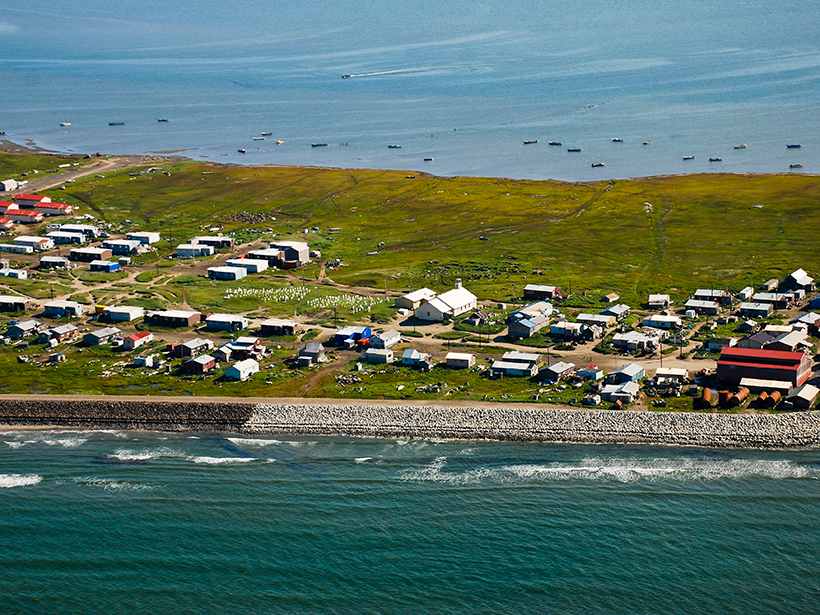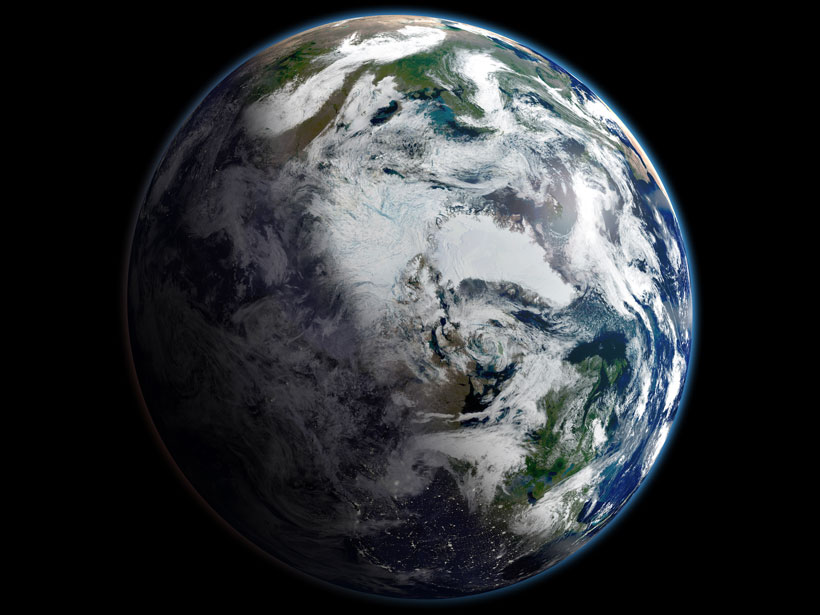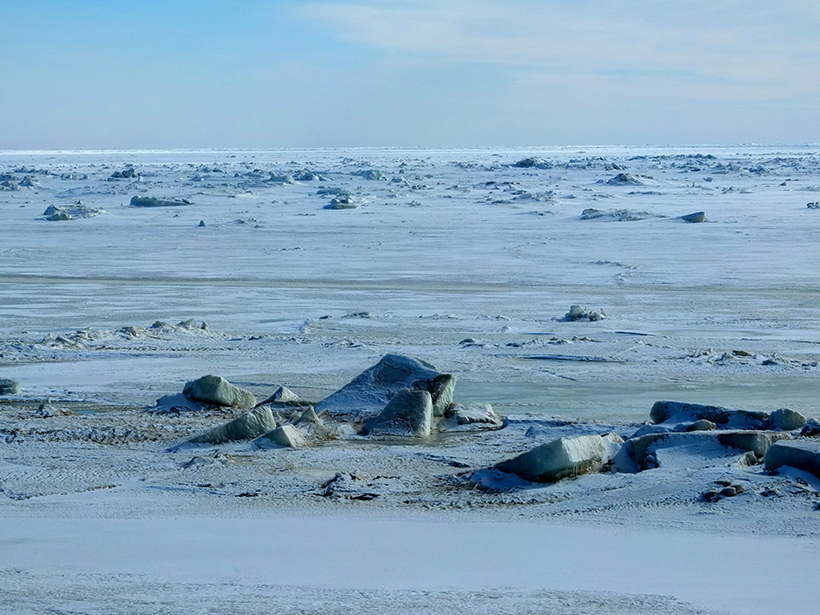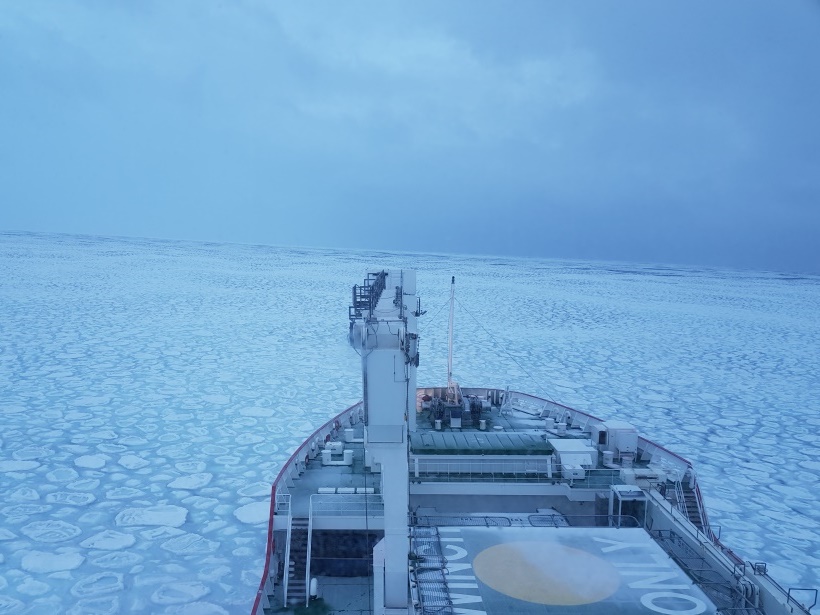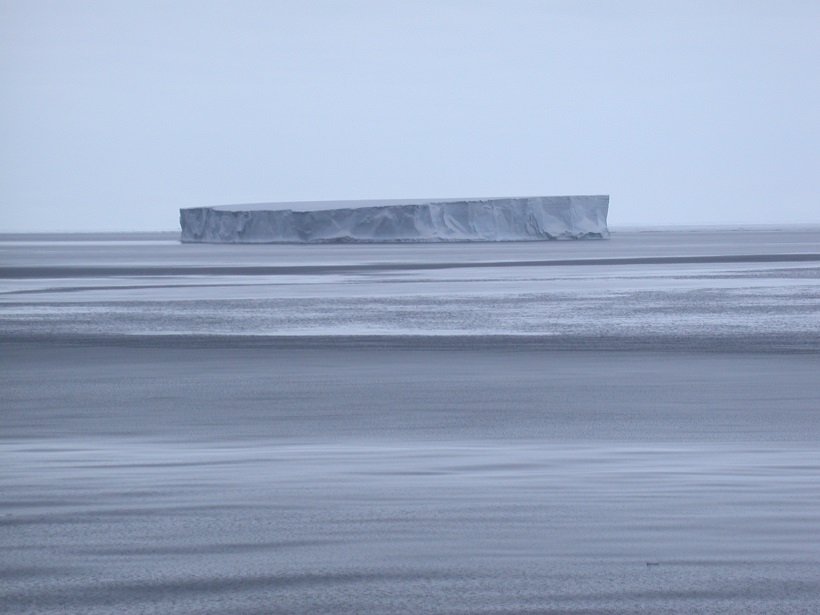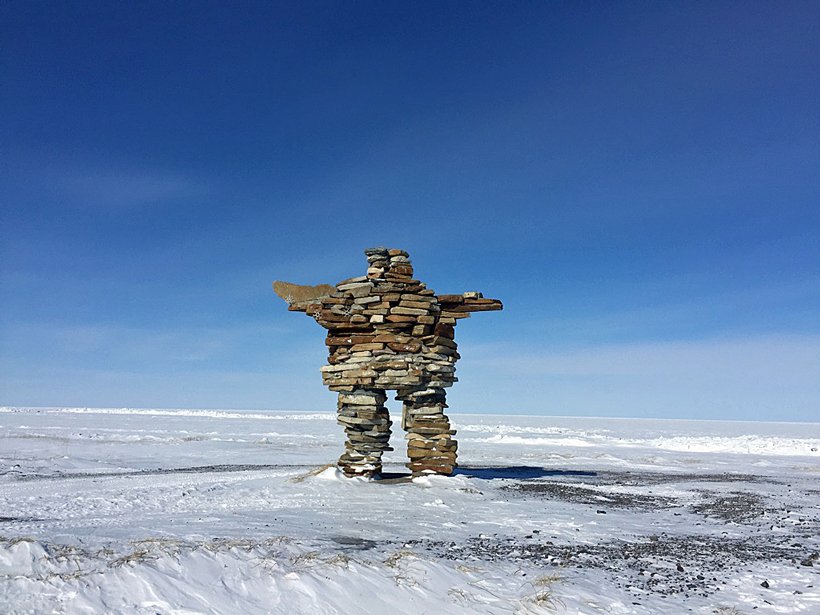Melting ice means that strong Arctic winds create more energetic currents in the Beaufort Gyre.
sea ice
Helping Alaskan Communities Facing Climate Risks
Scientists examine how best to use science to help communities respond to rapid climate change in the Arctic.
Reconstructing 150 Million Years of Arctic Ocean Climate
A new summary of past Arctic climate conditions gives insight into anthropogenic influences on today’s climate and on the need for future drilling studies to further improve our understanding of the past.
Will Melting Sea Ice Expose Marine Animals to New Diseases?
Marine mammals previously separated by Arctic ice may have more opportunities to interact as water routes redefine habitats and species ranges.
What the Arctic Ice Tells Us
With so few long-term climate data sets, the importance of the sea ice record is hard to overstate, and 2019 now ranks among the lowest ice minimums in the 40-year satellite record.
As Arctic Sea Ice Disappears, What Happens to Ecosystems?
The northern Bering Sea is experiencing record-setting low winter sea ice levels, which are impacting plankton, fish, and other animals in the region.
Antarctic Seasonal Sea Ice Melts Faster Than It Grows
Winds are thought to play a significant role in driving the asymmetric seasonal cycle of Antarctic sea ice growth and melt.
Light Permeates Seasonally Through Arctic Sea Ice
The transmission of sunlight through Arctic sea ice depends on the presence of ice, snow, and melt ponds, data collected over 6 years reveal.
Science in a Frozen Ocean
It’s notoriously difficult to access, but new technologies, international collaboration, regional models, and interdisciplinary approaches are improving understanding of the Weddell Gyre.
Understanding the Terrestrial Effects of Arctic Sea Ice Decline
T-MOSAiC Workshop 2019; Arkhangelsk, Russia, 25–26 May 2019

